INCREASING LOCAL FRUITS COMPETITIVENESS IN ENTERING THE TOURISM MARKET IN BALI
on
INTERNATIONAL JOURNAL OF BIOSCIENCES AND BIOTECHNOLOGY • VOL. II NO. 1 • SEPTEMBER 2014
ISSN: 9 772303 337008
INCREASING LOCAL FRUITS COMPETITIVENESS IN ENTERING THE TOURISM MARKET IN BALI
I Gede Putu Wirawan2,3,*, Ketut Srie Marhaeni Julyasih1, Wayan Adiartayasa2,3, I Nyoman Wijaya2,3, and I Putu Anom4
1Faculty of Agrculture, UPN Veteran, East Java, Surabaya --‐‑Indonesia
2Central Laboratory of Genetic Resources and Molecular Biology
3Faculty of Agriculture, Udayana University, Bali--‐‑Indonesia
4Faculty of Tourism, Udayana University, Bali--‐‑Indonesia
*Corresponding author: igpwirawan@yahoo.com and putu_wirawan@unud.ac.id
ABSTRACT
The study focused on improving the fruit quality supported by handling of the cultivation, harvest and post--‐‑ harve st handling such as fruit packing, transportation, storage, and others, as well as marketing strategies and regulations that are ne eded locally, so local Bali fruits can compete better in the Bali tourism market. The purposes of this study were to find some problems face by the local fruits to e nter the tourism marke t in Bali. The local fruits studied were citrus, salacca, mangoes, mangosteen, banana, and papaya. This study was through multiple surveys such as, inte rviews with farme rs, whole salers, fruit suppliers, and the manage rs of the hote ls and restaurants. The results of this study found some local fruits have e nte red the tourism market in Bali, in addition, local people in Bali te nd to consume the imported fruits for some cultural ceremony, events and others.The results of this study showthat the main problems in the local fruits such as citrus and banana were harvesting, packaging, storage, and transportation. The laboratory studies found that some microbes and inse cts infe cted local fruits due to the lackof handling such as packaging, storage, and transportation. The findings of this study was local fruits such as orange s and bananas face many obstacles ranging from harvest, post--‐‑harvest management, transportation, and the marketing strategies. Many problem has found on bananas such as damaged on storage, as well as citrus fruits. Improvements to the appearance of the fruit has been tried to do by the application of emulsion of he rbal oils, oleic acid, wax, twee n, and the results showe d the fruits still in a fre sh condition afte r four weeks of treatme nt while the untre ated fruits were rotten due tothe infe ction of microbes. The blackspots of insects ormicrobes infections on the treated fruits can be eliminated as well. Some inse cts and microbial attacks were found that leads to fruit rot which can essentially be removed by tre atment with antimicrobial tre atment. This research tries to chart the effects on the competitiveness of local fruits, such as continuity of production, standardization and regulation which could be developed at the local level in the village community.
Keywords: Local fruits, competitiveness, emulsion, regulation
INTRODUCTION
Development of Tourism in Indonesia so rapidly, especially in Bali and surrounding areas such as Lombok and Yogyakarta. Foreign and domestic tourist visit continue to increase each year. Statistical data of Bali Province showed that in January 2012 the foreign tourismvisit to Bali as 253.286 people who showed an increase of 21.14% compared with January 2011. The rapid development of tourism is not followed by an increase in the use and consumption of products localagriculture in supporting tourism. Indonesia is very rich and many produces agricultural products such as horticulture, meat, and other food products. But
the horticultural products produced especially Indonesia lack a decent place and pressured by imported horticultural products. Central Bureau of Statistics data show that imports of horticultural growing in 2008 as many as 881.6 US dollars and in 2011 become 1.7 billion US dollars, (Kompas. com, February 1, 2013). While PelitaOnline.com (March 19, 2013) stated that within a period of 5 years ie years 2006--‐‑2011 horticultural imports sharply increased almost 3--‐‑ fold (300%) of the 600 million US dollars become 1.7 billion US dollars. Hotels and restaurants mostly use imported products, especially fruits, meats, beverages, and other agricultural products. Another various aspects of agriculture such as rice terraces, water controlsystem, the way of farming, life of farmer,
rituals and ceremonies, agrarian culture and the arts become the main attraction of tourism in Bali.
This study tried to find an answer why horticultural products, especially fruits are not widely used and what are the steps that must be done so that more products locally produced such as fruits can enter the tourism market especially in Bali. Our previous research data shows that the local oranges and bananas are not used or consumed in hotels and restaurants because of the fruit is highly perishable (banana Fusarium wilt disease due to infection), performance does not good because the color is not uniform, because a lot of black spot bacterial or fungal infections, and specifically to siem oranges and tangerines caused by an infectious disease CVPD (Citrus Vein Phloem Degeneration) caused by bacteria Liberobacter asiaticum, which is common in citrus crops in the field so that make a citrus fruit into small pieces and color which is not good (Wirawan et al, 2004). Thus, the purpose of this study were to find some problems in increasing local fruits quality, that weredetermined from the plantation, harvest and post--‐‑harvest handling, transportation, and storages.
METHODS
This research was conducted at the Laboratory of Genetic Resources and Molecular Biology, University of Udayana, in theplantations of some fruits production area and tourism area at Sanur and Kuta, Bali. Some aspects of the research and the methods used in this study are as follows.
Questionnaire and observation method
the questionnaire was made in relation to local fruits that enter the tourism market and how the fruit is handled. In this case, we will work closely with the farmers, hotel and restaurant in Sanur and Kuta area, traders (supplyer fruits), and the foreign and domestic tourists. The survey will be conducted using questionnaires and observation.
Observation and interview
Observations on the handling of the harvest, post--‐‑harvest, transport, and marketing (the marketing chain) were done by direct observation method to the field both at the level of farmers, small trade collectors, supplyer of fruits, as well as the buyers such as wholesalers, hotels, and restaurants. Then, proceed with in--‐‑ depth interviews concerning the quality of the fruit, standardization of fruit, and more.
Demonstration and campaign of local fruits
This movement was an important part of improving the competitiveness of local fruits. This movement was done in collaboration with commitee Sanur Festival in 2014, by held the exhibition local fruits, processed foods and beverages from local fruit, and Focuse Group Discussion (FGD) on the management of the local fruit with participants from the women entrepreneurs, women association in the villages, hotel and restaurant spractitioners, cultural observers, the Bali Tourism Board, and the Bali travel association.
The treatment of local fruits by using emulsion
In doing research on the performance (attractiveness) and the storability of the fruit were done by treating the fruits with emulsion of stearic acid, palmitic acid, and oleic acid. To increase the attractiveness or the performance and storability of fruit, this study uses emulsion materials such as oleic acid, palmitic acid, and stearic acid, NaHCO3, and its combinations. Bananas, for example, should be kept in a state of separation from each other that gave color and durability for longer than if kept in groups, (NHK, March 10, 2013). Treatments were done in two ways; immersed the fruits for 3 minutes in the emulsion, and drained for 3 minutes and then wiped with tissue paper. Besides that the fruits were also washed by using detergent and wiped with tissue paper. The treatment of the fruit was done also using rubbed wax (candle) at the end of treatment in the selected fruits.
Regulations for the protection of local fruit
Regulation seems very necessary for improving the competitiveness of local fruit, this is caused mainly by the behavior of people who are more pleasure--‐‑import oriented anything coming from the import. Regulations such as Perda (Local Government Regulation), awig awig (The Villages Regulation), and perarem (Local Community Convention) can withstand the demand for imported fruit, especially in the environment of local peoples. Many needs of fruits in the community, especially for cultural ceremony, religion, and others. So that the existence and implementation of such regulations need to be observed.
RESULTS AND DISCUSSION
Handling Model of Local Fruits
The results of the research have been successfully formulated for a handling model of local fruits. Competitiveness of local fruits is influenced by several factors such as; (1) The conditions for the cultivation of fruit crops at the farm level producers, (2) Traders collectors and the Supplyer Fruit (concerning the quality of the fruit / grading, fruit packaging, transportation, brading, price incentives for farmers and producers), (3) Quality of Fruit (concerning attractiveness, storability, nutritional content, and taste), (4) Marketing Chain (Supply Chain), and (5) Regulation (PERDA, awig--‐‑awig and Perarem). Regulation is important because the model of tourism development in Bali is a cultural tourism, so that all tourisms developments and activities are based on Balinese culture as a tourist attraction enjoyed by the tourists. Each activity in the Balinese culture definitely use fruits as it becomes reasonable observation that we do show that the consumption of imported fruit in Bali are mostly done by the community. Looking at these facts, the provincial government of Bali and the Bali Provincial Parliament makea local regulation (PERDA) to protect of local fruits. Local fruit is a fruit that is produced especially in Bali and Indonesia in general. Figure 1, shows a model of the handling of the local fruit.
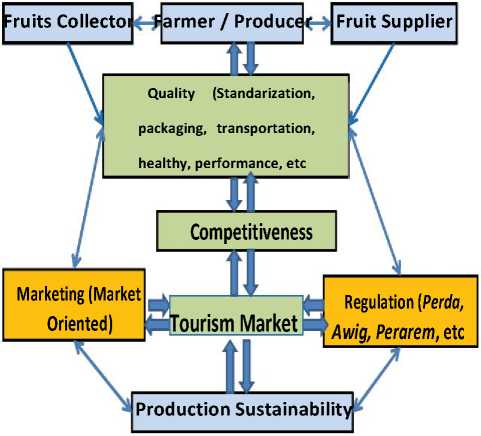
Fig. 1. Model handling of local fruits that ha ve been mapped and the factors that determine competitiveness in the tourism market and culture .
Conditions of plantation, harvest, post--‐‑ harvest, transport of citrus and salak fruits.
Constraints local fruits compete in entering the tourism market is also determined first of all by the growing conditions in the crop producing farmers. Observing citrus producing farmers in Kintamani District and salacca producing farmers in the districtof Bebandem, there are many phenomenon that causes the competitiveness of local fruits become relatively low. Observations show that the citrus groves, crops are left with fruit (lots) causing the fruit into small pieces and trends into a branch or twig to break because most plants bear fruit. In cultivation patterns are strongly encouraged to do so fruit thinning fruit into large and well maintained to avoid blotches on the skin of the fruit due to bacterial or fungal infection or insect bites (fruit flies). The pattern of salacca cultivation is not much different, where the crop is too tight and the fruit bunches are less maintened or less cleared. Figure 2 shows the growing conditions in the field. Similarly, Figure 3, which shows the condition of the fruit at merchant collectors. This condition greatly affects the quality of the fruit and ultimately affect the selling price. The quality of the fruit that enters the market still is not very good (not to say low,
22 • udayana university biosciences and biotechnology forum
because the real local fruit actually has a very good quality if handled properly). Fruit quality is also the same, due to lack of transportion handling, so, a lot of physical damage, which led to the damage caused by microbial attack, so easily to become rotten or display are not good and bad taste.
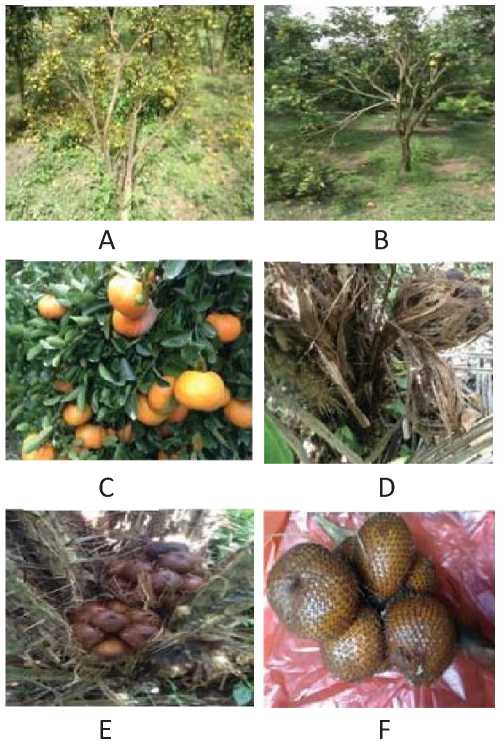
Fig.2. The condition of citrus and salacca plantation. Citrus plants with fruit that was too heavy and it appears some fallen trees or branches were broken off because the weight of the excess weight of the fruit (A--‐‑B).This figure also shown that the fungus --‐‑infected citrus fruit while still on the tree (C), and cultivation conditions salacca plant with bunches of less well--‐‑preserved fruits that was usually small (D--‐‑E). Salacca sugar or salak gula pasir can be a distinctive icon of Bali salacca (F).
It was can be also seen from the confectionary crop, fruit collecting, packing, to transporting them into a truck or car. Citrus fruit harvested bonded using waged labor will tend to harvest all the fruits that exist regardless of citrus fruit is ripe enough to be harvested and also did not concern to the fruit display. Citrus
fruit is collected scattered on the ground, and then sorted according to size pieces, then put in a box that has been filled newspapers. In such conditions the fruits suffered physical injury, especially since squashed inside during the transportation. If it lasts 2--‐‑3 days delivery, it can be calculated how much damage the fruit or fruit to be rot. In addition, there is also a transporting citrus fruit by letting piled in the car without sortation is done in advance. With such conditions standardization of the fruits are relatively difficult to do,so that, the local fruits are less able to compete in the market in general and in Bali tourism market in particular.
Packaging of fruits and their transportation by agrotourism enterprises is much different
that gave an excellent results. Other factors that also play a role that is, according to local political factors supplayer trade is also very much involved in inserting fruit into the tourism market such as star hotels or hotels chain. Payment fruits are usually taken back by two months, so this would require significant capital for the suppleyer to be able to keep selling until the payment arrives. Besides, it was said there was also a factor giving a “commission” to the person in charge of purchasing at the hotel or restaurant, where it is carried out with the marketing language that is certainly very difficult to be understood by the farmers or collectors fruits though.
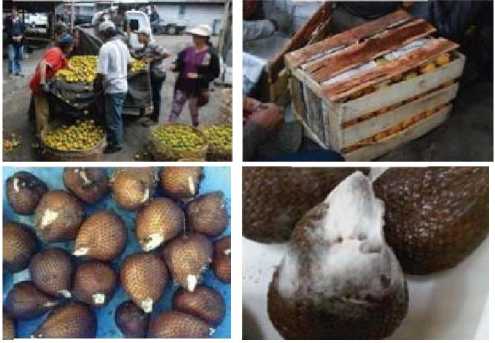
Fig. 3. Condition of citrus and salacca fruits at traders collectors. Conditions of collection, transportation, packing, and sorting the fruit as such condition will decrease the quality and shelf life of fruits. Freshly picked fruits with the skin peeled off in a multi--‐‑story base of the fruit causes fruit to become infected fungi or bacteria.
Improving the Quality of Fruit Display
Some technological innovations are selected to improve the performance of salacca and citrus fruits postharvest be a good choice and relatively inexpensive that can be implemented for farmers or collectors. The technologies include the cleaning of fruits by washing with detergent or by wrapping with 70% ethanol on the surface of the fruit. Besides that, it can be done by using an emulsion of oleic acid, palmitic acid, and stearic acid, and its combinations, and the
results as shown in Figure 4. The results showed that for all types of treatment have shown significant differences in the results compared to the non--‐‑treated fruits, and the average result showed that the fruit performance looks clearer, more uniform colors, patches due to fungal or insect becomes more vague, and the stability of 4 weeks longer than the fruit that was not treated
with the emulsion.
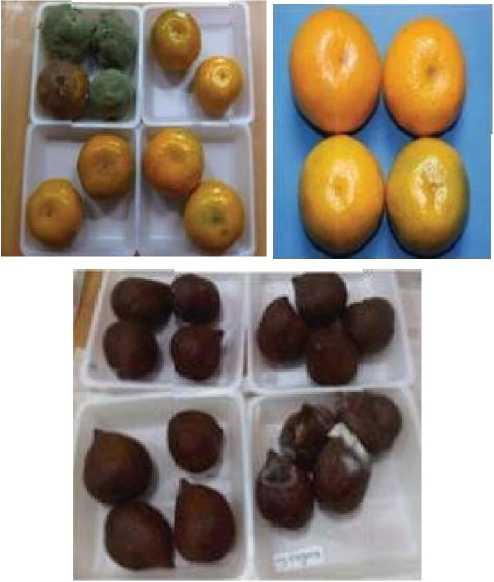
Fig.4. Treatment of citrus and salacca fruits with emulsionor washed the fruits using detergents. The emulsion used was an emulsion of oleic acid, palmitic acid, and stearic acid, and combinations thereof. Citrus and salacca fruits treated with the emulsion and washed using detergents look brighter, more uniform color, without spots, and the storability4 weeks longer than untreated fruits (there were some bacterial and fungi infections on the untreated fruits).
The treatment was without the use of pesticides.
Campaign or Movement Local Fruit Lovers
Campaigns of local fruits were done in the community and collaboration with the Committee of Sanur Festival, in the form of focus group discussion (FGD) and an exhibition and parade of local fruits. The campaign was held in August 2014, in the series of events of Sanur Village Festival with participants from the mothers association, youth association, and Banjar Adat or Pekraman.
FGD was also held on the same theme,
namely how we are to love the local fruits to use it at every opportunity both for everyday at home, cultural or religious ceremony, as well as for business purposes. This event will bring community leaders/local tourism business leaders, supplyer fruits, merchant wholesalers, manufacturers and farmers to have a wider opportunity in doing business with local fruits.
Figure 5 show the parade of local fruits in Sanur
Village Festival that was conducted in relation with this study.
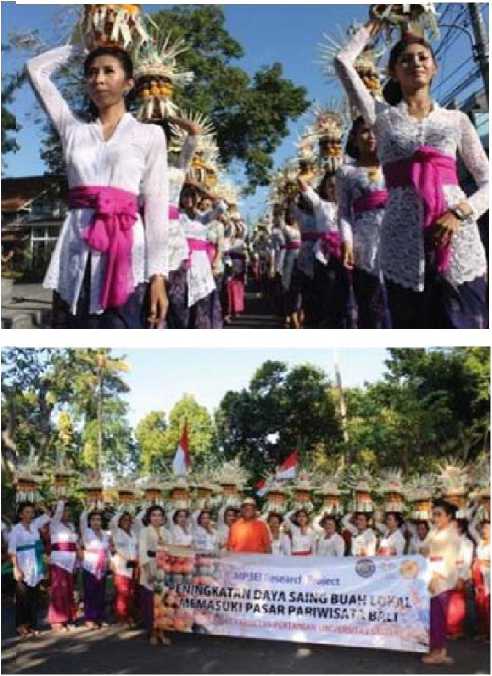
Fig.5. The parade of local fruits in Sanur Village Festival.
Regulation
Bali provincial government has issued a regulation (Perda) No.3 of 2013 on the Protection of Local Fruits intended to stem the torrent of imported fruits in the general market as well as the Bali tourism market. The discussion is overdue long legislation involving various circles both academics and practitioners, and of course, the parliament and the provincial administration is expected to give good results as part of other businesses. Besides, some Pekraman, the villages in Bali also make local regulations called awig awig or rules that prohibit the use of imported fruit in various traditional cultural ceremonies (culture) and religion that is expected to provide opportunities for local fruit for developing and filling the market. Awig awig pekraman village Sibetan, District Bebandem for example, set up a local fruit through perarem. Fill in perarem has been agreed that all the villagers to plant local fruits and produced in the village area of Sibetan. In 2013 in Tabanan made even a campaign using local fruit by presenting 544 pieces of Gebogan (the art of showing and handling the fruits) who paraded around the town of Tabanan. These events would be useful for the creation of opportunities for the role of local fruits and member incentives for farmers fruit producers. Must necessarily be followed by improving the handling of cultivation, harvesting, post--‐‑ harvesting, packaging, and transportation of fruit.
ACKNOWLEDGEMENT
REFERENCES
Adhiartayasa IW. 2006. Berbagai Tipe Gejala Serangan Penyakit CVPD pada Tanaman Jeruk. Thesis. Program Studi Bioteknologi Pertanian, Universitas Udayana.
Agustini NP. 2006. Formulasi berbagai jenis bio--‐‑ hormon dan unsur hara untuk merangsang pertumbuhan akar, buah, dan bunga. Thesis. Program Studi Bioteknologi Pertanian, Universitas Udayana.
BPS Provinsi Bali. 2012. Berita Resmi Statistik No. 15/03/51/th. VI, 1 Maret 2012.
Buah Lokal vs Buah Impor. Artikel Populer, Gerakan Cinta Pangan Lokal. 25 Februari 2013.
Dalam 5 Tahun Import Hortikultura
Meningkat 35 Persen. PelitaOnline.com. 19 Maret 2013.
Langkah Kementerian Pertanian merekomendasi penghentian impor atas 13 jenis produk hortikultura mengundang reaksi pro dan kontra. KOMPAS.com, 1 February 2013.
NHK 10 Maret 2013, Berita Pagi Jam 8. Peraturan Daerah Propinsi Bali Nomor 3 Tahun
2013 tentang Perlindungan Buah Lokal. Wirawan IGP, Sulistyowati L dan Wijaya IN.
2004. Penyakit CVPD pada tanaman jeruk. Analisis Baru Berbasis Bioteknologi. Penerbit Direktorat Jenderal Bina Hortikultura, Departemen Pertanian RI.
Wirawan IGP, Supartana P, dan Juliasih SM, 2009. Perkembangan Bioteknologi Indonesia. Udayana University Pres
The author wish to thank the MP3EI Research scheme for financial support of this study.
ASIA OCEANIA BIOSCIENCES AND BIOTECHNOLOGY CONSORTIUM • 25
Discussion and feedback